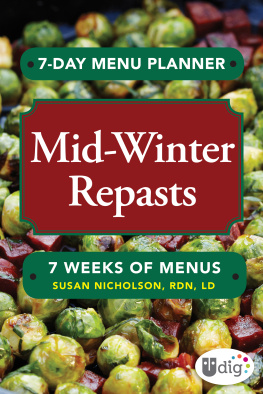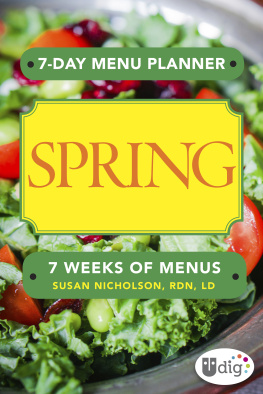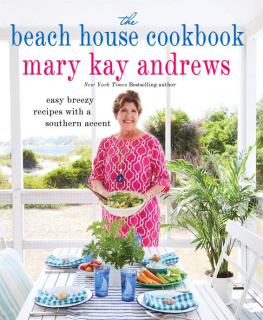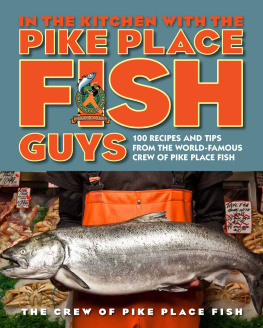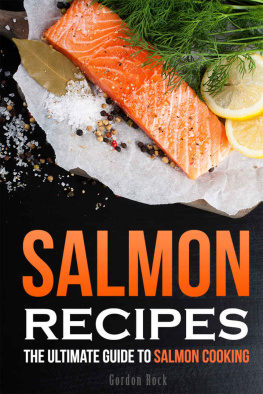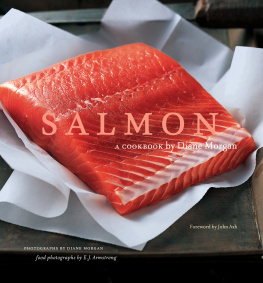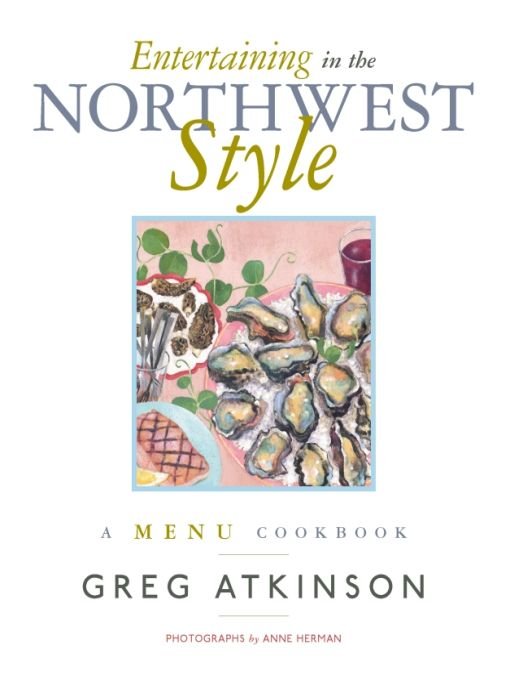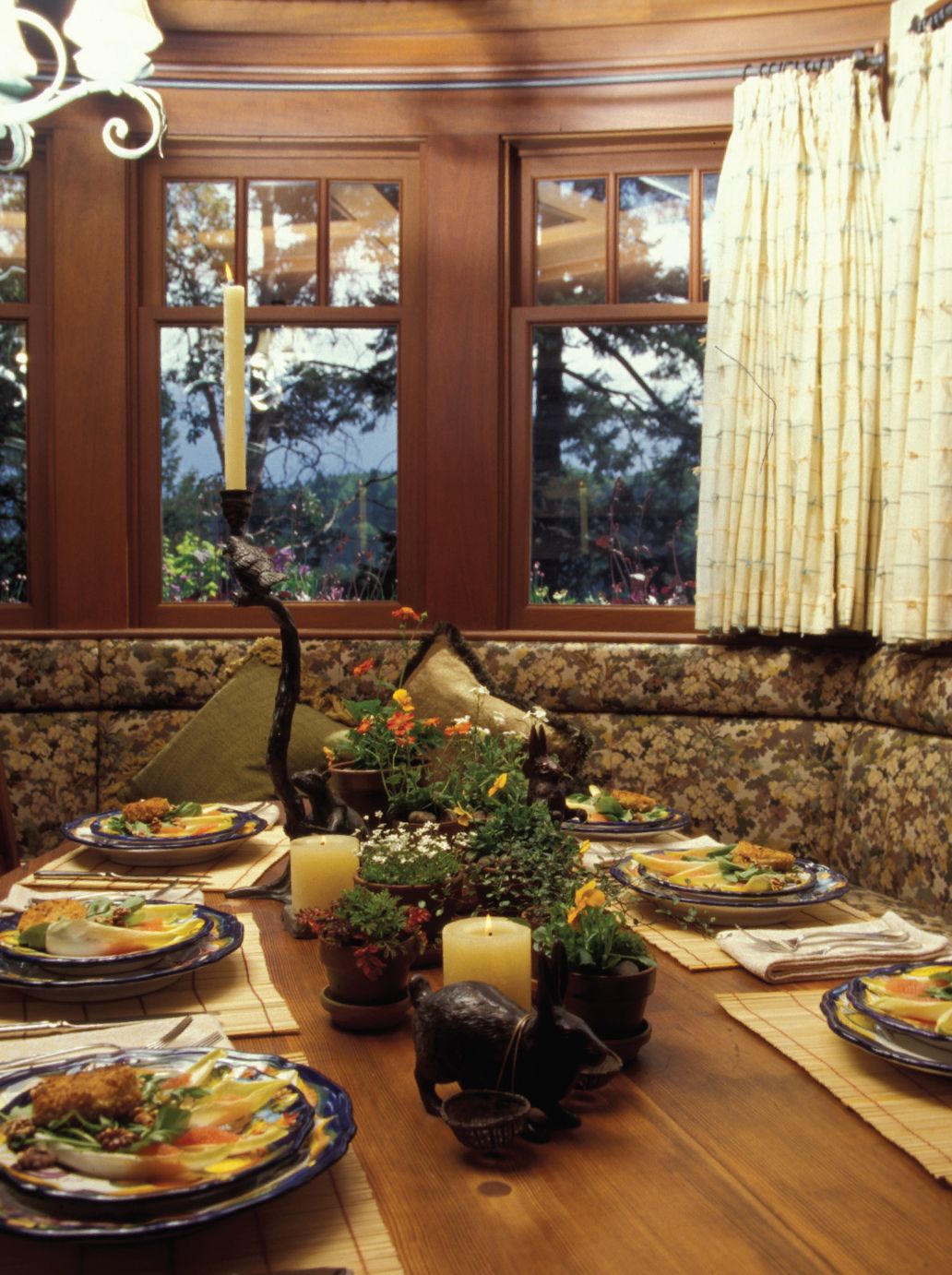Table of Contents
Acknowledgments
This book is dedicated to my parents, Tex and Annie. Learning to cook, I trashed their kitchen more times than I can count. But more than splattered walls and flour-covered floors, in the process of learning to be a fully realized human being, I created emotional messes that were far worse than the ones I left in their kitchen. Now, with two children of my own, I marvel at how they raised six of us born in a short seven years. And I recall with wonder the thousands of meals we took together around the round wooden table they bought when we moved into the house where they still live.
Now when I stand at the stove, I sense my mothers presence, encouraging me to pay attention to the food, to leave it alone when it needs to be left alone, and to watch for signs that it needs my attention. And whenever I sit down to write, I imagine how my father will respond when he reads it. I think his passion for the written word, deferred as it was so that he could provide for his family, is what motivated me to write. Wherever I have gone, whatever I have done, my parents have encouraged me to go there and do it, to be myself. And no matter how I rebelled against them or challenged their beliefs, they met me halfway and embraced me, their youngest son. Put simply, they have loved me, and for that I love them.
Perhaps because Tex and Annie used to tell me that I could do whatever I set my mind to, I once believed that I could write the book I had in my head. Now, as I send this, my fourth cookbook, to press, I have come to realize that a book has a life of its own. And bringing it into the world has shaped my writing and my cooking almost as much as I have shaped the book. Originally conceived as a collection of recipes that would represent the meals I was cooking as executive chef at Canlis restaurant in Seattle, the book, as it unfolded, became more and more about cooking and entertaining at home and in the homes of my friends. Those friends include my former bosses Chris and Alice Canlis, the owners of Canlis restaurant, who provided me with the most amazing opportunities for professional growth a chef could ever wish for, and to whom I am eternally grateful.
Long before the book was complete, even before I was finished at Canlis, I left the restaurant to launch the food and beverage programs at IslandWood, an outdoor education facility that sprang up in the woods near my home on Bainbridge Island. I am immensely grateful to Paul and Debbi Brainerd, the founders of IslandWood, for preserving that land and providing thousands of children with a windowboth cognitive and corporalinto the natural world, a world from which we are all too often completely removed. And I thank Paul and Debbi for opening their home to me to prepare what I hope have been memorable meals that helped provide funding for the kids programs at IslandWood.
My staff at IslandWood, especially Tom Loverich and Kerrie Sanson, made it possible for anything I could imagine to become real in that dining hall. With their help, I prepared some of the best meals I have ever cooked. I am also grateful to the school-age kids with whom I had the privilege to spend time there. They helped me realize how important food is to people in their formative years, how it shapes their understanding of the world, and how the food choices we make impact the natural systems of which we all are a part.
The kids shared family-style meals around tables in the dining hall, recycled their leftovers into compost that was eventually piled onto a display garden, and helped harvest some of the vegetables and herbs for their meals. Over the year and a half that I served as chef at IslandWood, the concept for this book continued to take shape, unfurling and refolding in on itself again and again like the leaves on a tree.
Most of the menus and recipes were at one time or another incorporated into a series of cooking classes that I taught at various cooking schools around Puget Sound. I am grateful to the directors of those schools for providing me with the opportunity to teach. And I am even more grateful to the students who asked tough questions, forcing me to view each recipe as if I had never prepared the dish before. This allowed me to correct many simple errors and to answer myriad questions that readers might have asked. I know the process made this a better book.
The recipes and menus were developed further when they were prepared in order to be photographed. When it came time to photograph the menus, I called on friends and asked if I could prepare the menus in their homes. Seeing my food re-created in others kitchens and presented on their dishes at their tables allowed me to see how the dishes might be adapted to other peoples equipment and incorporated into other peoples lives. And I am very grateful to the hosts who invited me in with the photographer and her equipment to bring these menus to life. Thanks are due to Anne and Langdon Simons, Chris and Alice Canlis, Peter and Melissa Evans, Paul and Debbi Brainerd, Bruce and Nancy Williams, Michael and Marielle Macville, and Jerilyn Brusseau. And huge thanks to Anne Herman, who allowed all of us to act as onthe-spot food stylists, commentators, and photographic assistants.
To send this book out into the world in a fixed state, a printed form that may no longer be altered, seems odd to me. These essays, recipes, and menus have continually evolved over the years that it has taken me to compile them. But I suppose, as readers and cooks open the book to read the stories, to plan parties, or to use the recipes as a guide in the kitchen, these parts might continue to change, at least in the way they are perceived. So I am grateful to the people who will use it, keeping alive the flavors and feelings that motivated me to write it.
I thank Gary Luke, my patient and visionary editor, who has seen better than I have what each of my book proposals has held, and who has helped me steer my work toward a brighter manifestation of what it should be.
My hope is that readers and cooks will take from this book not only recipes and menu plans but frames of mind, humor, and delight, and perhaps a little of the sorrow and fear that went into it. This way, meals that arise from these pages will be seasoned not only with the salt and pepper and herbs listed among the ingredients but with that intangible, unnameable stuff that life is made of.
Finally, I would like to thank my wife, Betsy, who once, long ago, encouraged me to submit my first food stories to a small-town newspaper editor. After years of saying I would like to write about food, and after actually writing a series of sample articles, I got cold feet, and my fear of rejection nearly paralyzed me. Theyre no good, I said. The Journal doesnt want these! Im no writer! She placed a hand on each of my shoulders and gently forced me to look her in the eyes. When our eyes finally met, she smiled, and I smiled in spite of myself, and my great dramatic performance went to pieces.
You are a writer, she began. You have known you were a writer since you were eight years old. You told me so. She was beautiful, angry, and sincere. I was humbled. You are also a great chef, she said, and hushed me when I scoffed. No one is better qualified than you are to write about the food you love. There are moments when I believe she was right. Thank you, Betsy.


